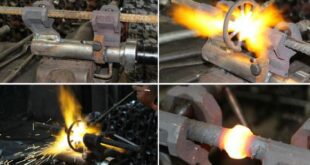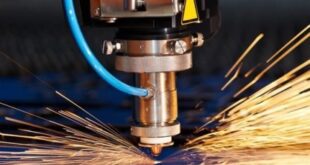Engineering Properties of Welds Introduction Welding is a fundamental process in the realm of engineering, serving as the bedrock for joining materials to create structures and components. It is a transformative technique that involves the melting and fusion of materials, resulting in a strong and durable bond. This introductory section …
Read More »Partially Melted Zone in Aluminum
Partially Melted Zone in Aluminum Welding Welding is both an art and a science, especially when it comes to working with aluminum. The partially melted zone, a crucial aspect of the welding process, plays a pivotal role in determining the quality and strength of the final weld. In this comprehensive …
Read More »What Is Hot Pressure Welding?
What Is Hot Pressure Welding? Introduction Welding is an important process used in various industries for joining materials. One of the most effective welding techniques is hot pressure welding, which involves the use of heat and pressure to join materials together. In this article, we will explore the basics of …
Read More »Thermo-mechanically Affected Zone in Friction Stir Welding
Thermo-mechanically Affected Zone in Friction Stir Welding Introduction Friction Stir Welding (FSW) is a revolutionary solid-state joining process that has gained immense popularity in various industries due to its advantages over conventional welding methods. However, during the FSW process, a unique zone called the Thermo-mechanically Affected Zone (TMAZ) is formed. …
Read More »Hydrogen Embrittlement in Welding
Hydrogen Embrittlement in Welding Hydrogen embrittlement is a critical concern in the welding industry, impacting the integrity and performance of welded structures. In this article, we delve into the phenomenon of hydrogen embrittlement, its causes, preventive measures, and its influence on various welding techniques. By understanding the complexities of hydrogen …
Read More »What Is Heat Affected Zone (HAZ)?
What Is Heat Affected Zone (HAZ)? Introduction Definition of the Heat Affected Zone (HAZ) The Heat Affected Zone (HAZ) refers to the region of a material that undergoes significant changes in its microstructure and mechanical properties due to the heat generated during welding or heat treatment processes. When heat is …
Read More »Introduction to Destructive Weld Testing
Introduction to Destructive Weld Testing: Ensuring Strong and Reliable Joints Introduction Welding is a vital process in various industries, from construction and manufacturing to automotive and aerospace. The quality and reliability of welded joints play a crucial role in ensuring the structural integrity and safety of the finished product. To …
Read More »What Is Explosion Welding?
Introduction Explosion welding, also known as explosive welding or EXW, is a solid-state welding process that uses the energy generated by a chemical explosion to bond two or more dissimilar metals or alloys. The process is characterized by the formation of a high-velocity jet of metal that collides with a …
Read More »Friction Stir Welding and Process
Friction Stir Welding and Process Introduction Friction Stir Welding (FSW) is a solid-state welding process that was developed in the 1990s. It involves the joining of metals without melting the material, and instead uses friction and pressure to create a strong bond between the two pieces. FSW has become an …
Read More »The Welding Materials and their Properties
The Welding Materials and their Properties Introduction Definition of welding: Welding is a process of joining two or more pieces of metal or thermoplastics by heating them to their melting point and allowing them to fuse together. Importance of welding materials and their properties: Welding is an essential process in …
Read More » Welding of Welders All about Welding and Welders
Welding of Welders All about Welding and Welders








